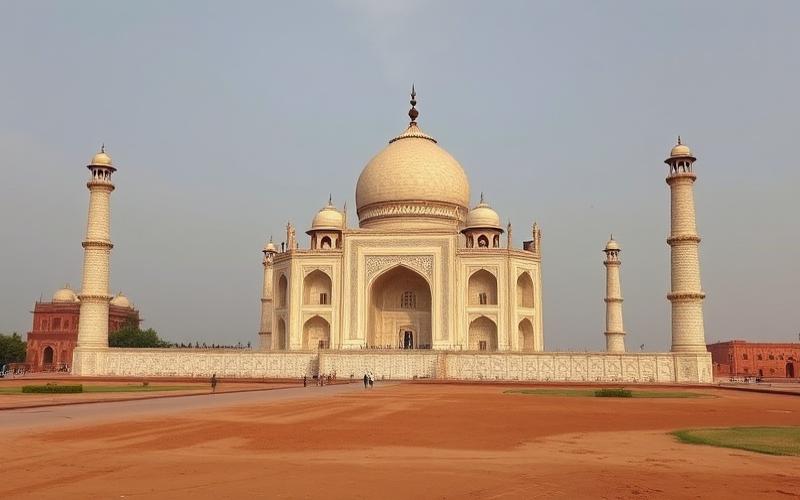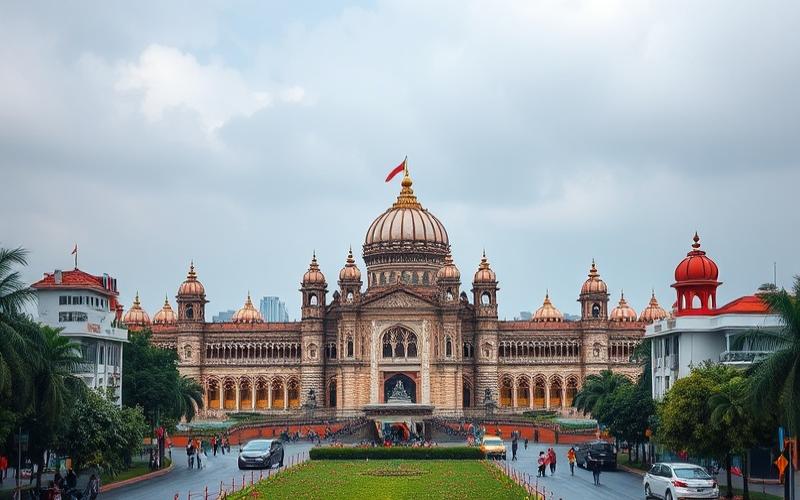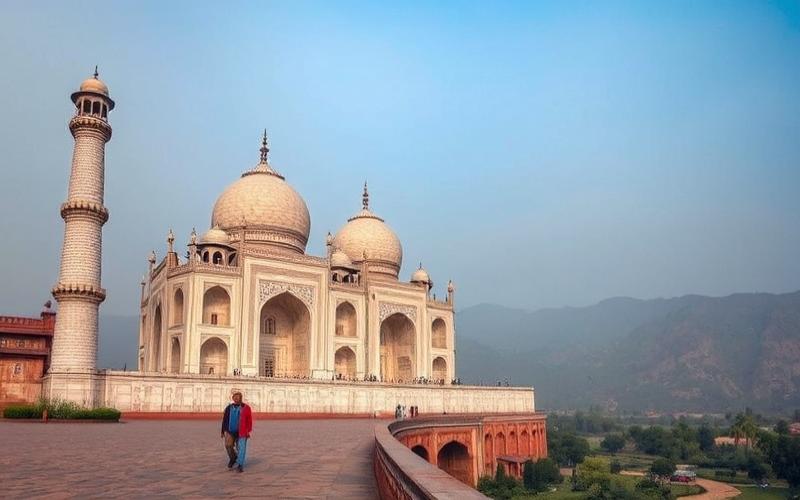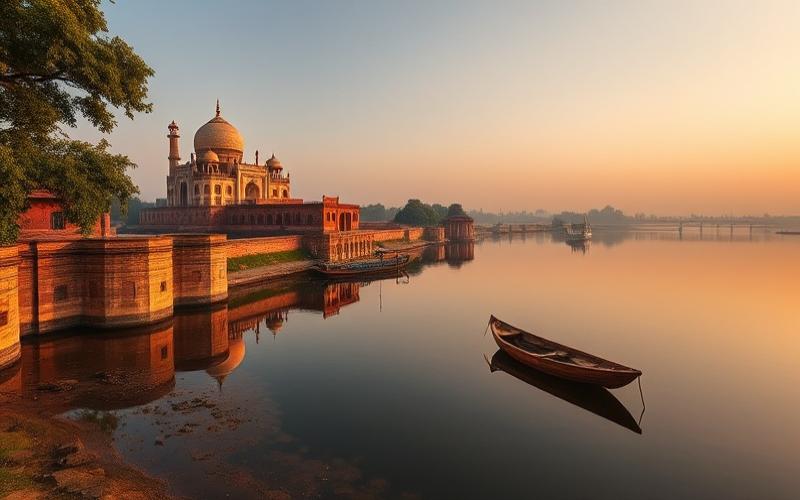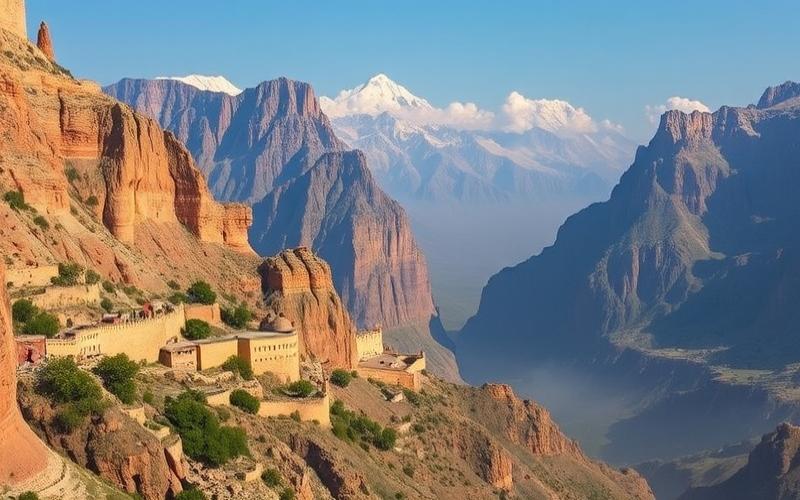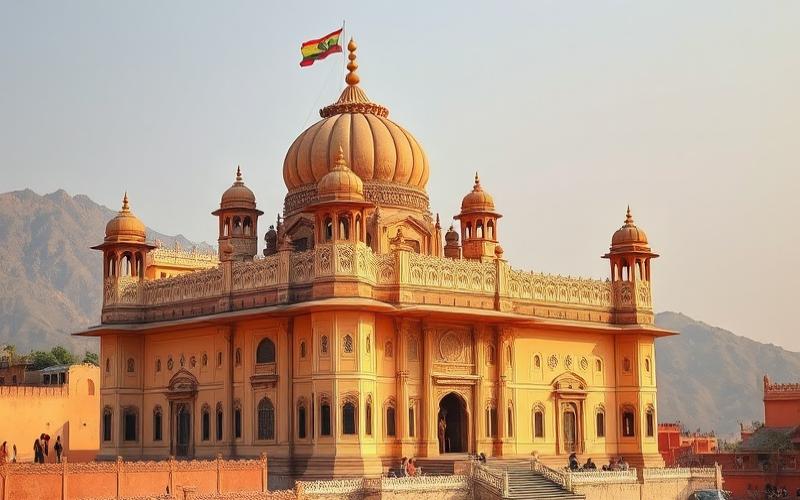
 Published on and written by Cyril Jarnias
Published on and written by Cyril Jarnias
Navigating the complexities of Indian regulations to obtain a building permit can seem like a daunting task for real estate developers and individuals. Procedures vary significantly from state to state, and it’s crucial to understand both local specifics and national principles.
This article breaks down the key steps of the process, from submitting required documents to final approval, while highlighting common challenges to overcome. By explaining potential pitfalls and offering practical advice, we aim to ease the administrative burden and successfully guide those looking to invest in the dynamic Indian real estate market.
Administrative Procedures for Obtaining a Building Permit in India
Legislative Framework
Building permits in India are governed by both national laws and local regulations, with specific requirements in certain protected or sensitive areas.
- Main National Laws:
- National Building Code of India (NBC), which defines general construction standards.
- Environment Protection Act (1986) and Forest Conservation Act (1980) for environmental protection.
- In protected areas: Foreigners (Protected Areas) Act, requiring a Protected Area Permit (PAP) or Restricted Area Permit (RAP) depending on location.
- Local Regulations:
- Municipalities impose their own urban planning regulations (zoning, height, footprint, etc.).
- In areas near monuments or sensitive sites, approval from the Archaeological Survey of India or heritage departments is required.
| Involved Authority | Type of Authorization Required |
|---|---|
| Local Municipality | Standard building permit |
| Ministry of Environment | Environmental assessment |
| Coastal Regulation Authority | Coastal zone authorization |
| Archaeological Survey | Cultural/heritage validation |
Detailed Process Steps
- File Preparation
- Verification of zoning and local restrictions.
- Consultation with a certified architect or licensed engineer.
- Preparation of architectural plans compliant with NBC and local regulations.
- Conducting environmental studies if necessary.
- File Compilation
- Filling out the municipal form specific to the project type (each state or municipality has its own forms, often available online).
- Gathering the following documents:
- Architectural plans signed by a licensed architect.
- Environmental impact assessment (for large-scale projects).
- Proof of land ownership.
- Compliance certificates (zoning, heritage, etc.).
- Structural engineering report.
- Neighbor consent (in some cases).
- Submission and Follow-up
- Filing the application with the municipality or competent authority (online or in person).
- Payment of filing fees.
- Tracking the application review, which may include site visits and requests for additional information.
| Step | Involved Parties | Required Documents/Forms |
|---|---|---|
| File Preparation | Architect, engineer | Plans, environmental studies |
| File Compilation | Applicant, architect | Forms, proofs, certificates |
| Submission | Applicant | Complete file, fee payment |
| Follow-up and Review | Local authorities | Site visits, correspondence, potential modifications |
Certified Professionals Involved
- Architects: Required for designing plans and signing technical documents.
- Civil Engineers: Responsible for structural calculations and technical compliance.
- Environmental Experts: For impact assessments.
Associated Fees and Timelines
- Fees: Vary based on project size, municipality, and area (from a few hundred to several thousand euros for large projects).
- Average Processing Time: 3 to 6 months, potentially longer in protected areas or if modifications are requested.
Common Challenges and Solutions
- Multiple involved authorities (environment, heritage, etc.).
- Long review times, sometimes due to incomplete or non-compliant files.
- Complexity of documentary requirements and forms, especially for non-residents or in sensitive areas.
Possible Solutions:
- Hire architectural and engineering firms experienced in the region.
- Use municipal online platforms for file tracking and appointment scheduling.
- Prepare a comprehensive file from the start to minimize back-and-forth.
Resources and Online Platforms
- Municipal building permit submission portals (available in most major Indian cities).
- Government platforms for tracking environmental or heritage procedures.
- Practical guides and online assistance from chambers of commerce or specialized firms.
Key Takeaway:
Assistance from certified professionals and use of local digital platforms greatly facilitate obtaining a building permit in India, despite administrative complexity and diverse requirements based on project location.
Good to Know:
In India, the building permit process is governed by the National Building Code and supplemented by local regulations such as Development Control Regulations (DCR). The first step involves preparing required documents, including architectural plans compliant with current standards, environmental impact assessments, and declarations of compliance with local regulations. Forms like the Common Application Form must be completed, and it’s highly recommended to use certified professionals such as architects or engineers. Fees vary by region but are generally calculated per square meter built. The average approval time is 30 to 60 days, though delays may occur due to incomplete documentation. Using online platforms like Unified Building Bye-laws is recommended to facilitate tracking and submission of applications. To mitigate common challenges, such as varying requirements from region to region, consulting a local expert can be beneficial.
Competent Authorities and Required Documents for Expatriates
The main competent Indian authorities in the building permit process intervene at different stages and depending on the project location. Here’s an overview of roles, responsibilities, and required documents, particularly for expatriates:
| Authority | Role/Responsibility |
|---|---|
| Local Municipality / Urban Local Body (ULB) | Receives building permit applications, verifies compliance with local urban regulations, issues final permit. |
| Ministry of Environment and Forests | Mandatory environmental assessment for certain projects or sensitive areas; issues specific environmental clearances. |
| Coastal Regulation Zone Authority | Issues authorizations for construction in regulated coastal zones; monitors compliance with local ecological standards. |
| Forest Department / Wildlife Warden | For projects in protected areas or near natural reserves: issues Protected Area Permit (PAP) or Restricted Area Permit (RAP), protects local wildlife and flora. |
| Archaeological Survey of India / Local Heritage Department | Heritage validation if the project might impact a historical or archaeological site; may issue specific recommendations. |
Summary of Major Responsibilities:
- Technical and regulatory verification of architectural plans.
- Legal control over land titles.
- Environmental and heritage inspection based on location.
- Monitoring during execution until final certificate issuance.
Documents Generally Required by These Authorities:
- Properly completed official application form
- Authenticated land title (sale deed, lease deed, etc.)
- Certificate of no mortgage/debt on the land
- Architectural plans signed by a licensed architect (site plan, elevation plan…)
- Cadastral certificate
- Topographic/geographical location report
- Ecological certificate/environmental impact assessment if applicable
- Valid Indian visa corresponding to purpose (business/investor/work)
(for expatriates only)
Documentary Differences Between Expatriates and Indian Citizens:
| Required Document | Indian Citizen | Expatriate |
|---|---|---|
| Proof of Identity | Aadhaar Card/PAN Card | Passport + appropriate visa |
| Proof of Residence | Local utility bill/public service | Temporary address/hotel/legal representative |
For any construction in protected areas:
Expatriates must obtain a PAP/RAP before any procedures with local municipalities.
Key Steps for a Complete Application:
- Initial submission to municipality with all mandatory documents.
- Parallel submission to environmental/heritage agencies if applicable.
- Possible receipt of additional notices (coastal/protected areas).
- Mandatory public display in immediate vicinity upon provisional acceptance.
Average processing time ranges from 3 to 6 months depending on administrative complexity and geographical location.
In summary: The process involves multiple administrative levels, each examining technical, ecological, cultural, and legal compliance—with additional requirements for any foreign national wishing to build in certain sensitive or protected areas.
Good to Know:
In India, obtaining a building permit involves several competent authorities, including the local Urban Development Ministry, municipalities, and urban planning agencies that handle legal compliance approval, municipal authorizations, and urban planning respectively. Expatriates must provide documents similar to Indian citizens such as permit applications, verified property titles, and certified architectural plans, but they are often required to submit copies of their valid passport and visa, as well as proof of local residence. Notable differences in required documents also include authorization from the Reserve Bank of India for direct real estate investments. It is therefore advisable to consult a local lawyer or urban planning consultant to ensure compliance of all documents and to effectively navigate these complex procedures.
Urban Planning Regulations to Know Before Building
Main urban planning regulations in India to know before any construction project:
- Urban Planning and Land Development Law: This law governs urban planning, zoning, land use, and building permits. Urban master plans are regulated by federal states, but they are often static and poorly integrated into a comprehensive vision.
- Role of Local Authorities:
- Municipalities: Issue building permits, enforce zoning, and manage local planning.
- Municipal Councils & Parastatal Agencies: Control territorial development (water, transportation, housing), but their lack of decentralization limits their effectiveness.
- Mandatory Environmental Permits:
- Any significant construction must obtain environmental authorization certifying compliance with standards on water, waste management, and air quality.
- Particularly crucial in areas vulnerable to climate risks (urban flooding, cyclones).
- Mandatory Setback Distances:
- Rules impose a minimum setback between the proposed building and roads or property boundaries to ensure safety and accessibility.
- Seismic or Historical Areas – Specific Restrictions:
- In seismic regions (Himalayas…), strict anti-seismic standards must be followed.
- Proximity to heritage/historical sites: Prohibition or strict limitations regarding maximum height, materials used, or design to preserve cultural integrity.
Possible Consequences of Non-Compliance
- Imposition of substantial fines by local authorities
- Formal orders for immediate work stoppage
- Potential court order for total/partial demolition
- Permanent permit revocation with blacklisting
What Makes the Indian Process Unique
| Specificities | Details |
|---|---|
| Administrative Fragmentation | Power distributed between federal states/parastatal agencies; weak municipal autonomy |
| Extreme Demographic Pressure | Rapid growth requiring constant adaptation; massive existence of informal settlements (slums) |
| Strong Cultural Influence | Mandatory respect for religious/historical areas; frequent social interventions during urban projects |
| Complex Bureaucratic Process | Multiple required authorizations; sometimes lengthy delays due to cross-checks |
Summary List – Essential Points Before Construction
- Verify local zoning with municipal council
- Obtain all necessary permits (construction + environment)
- Respect legal distances from public roads/neighbors
- Ensure compliance if in sensitive area (seismic/historical)
Any non-compliance exposes to heavy administrative or even judicial sanctions.
Good to Know:
Before launching a construction project in India, it’s crucial to know certain urban planning regulations, such as the Urban Planning and Land Development Law, which governs land use and development. Local authorities and municipal councils play a determining role in project control, requiring environmental authorizations to protect the ecosystem. Respecting mandatory setback distances from roads and neighboring structures is essential, as are restrictions in seismic or historical areas to preserve cultural heritage. Any failure to comply with these regulations can lead to sanctions ranging from fines to demolition orders. The approval process is often influenced by cultural and administrative specificities unique to India, making procedures sometimes longer and more complex than in other countries.
Disclaimer: The information provided on this website is for informational purposes only and does not constitute financial, legal, or professional advice. We encourage you to consult qualified experts before making any investment, real estate, or expatriation decisions. Although we strive to maintain up-to-date and accurate information, we do not guarantee the completeness, accuracy, or timeliness of the proposed content. As investment and expatriation involve risks, we disclaim any liability for potential losses or damages arising from the use of this site. Your use of this site confirms your acceptance of these terms and your understanding of the associated risks.





